17th Century William and Mary Kingwood Strongbox, with Gilt Brass
SOLD
Request Information
Follow Us
17th Century William and Mary Kingwood Strongbox, with Gilt Brass
A 17th century William and Mary Kingwood strongbox, with gilt brass straps. This strongbox has to be one of the most charming and certainly the smallest example we have encountered, at just 17.5 cm high, 28 cm wide and 18 cm deep. A strongbox of similar merit form and style resides at Burghley House in ‘The 1st George State Room.
The box appears decorative, but it was also very difficult to break open or steal. It has a strong lock to the centre and two bolts concealed in the sides, so that it could be screwed down into floorboards if necessary or that of a horse-drawn carriage. Strong-boxes veneered in oysters of Princewood such as this were luxury objects.
The Cabinet-makers who would have constructed and veneered the carcase apparently sold them, often using tropical hardwood veneers, and mounted it with sets of mounts, handles and locks bought in from brass founders. The elaborate veneering and conspicuous gilded brass mounts show that the appearance of these objects was important.
Thomas Pistor, of Ludgate Hill, London worked with the renowned cabinetmaker Gerrit Jensen. Gerrit Jensen supplied a walnut-veneered ‘strongbox’ to Colonel James Grahame in 1668, Levens Hall. It is recorded that Thomas Pistor’s remaining stock was sold off post his death in 1711, included ‘three fine Prices wood strongboxes’.
Condition
Fabulous original condition with a wonderful patina.
Provenance
Literature
Dimensions
PREVIOUSLY SOLD
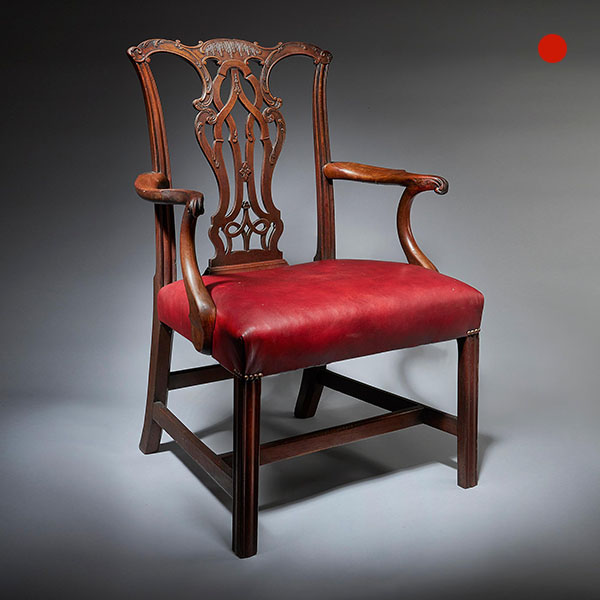
George III 18th Century Mahogany Armchair in the Manner of Thomas Chippendale
George III 18th Century Mahogany Armchair in the Manner of Thomas Chippendale Sold Follow UsGeorge III 18th Century Mahogany Armchair in the Manner of Thomas Chippendale This wonderful and original armchair from the mid-18th century...
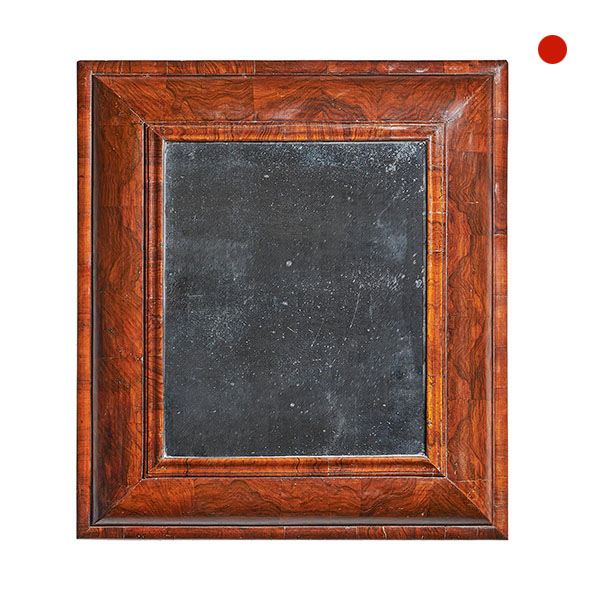
Large 17th Century William and Mary Figured Walnut Cushion Mirror
Large 17th Century William and Mary Figured Walnut Cushion Mirror SOLDFollow UsLarge 17th Century William and Mary Figured Walnut Cushion Mirror The age patinated mercury mirror plate is bordered with a fine cross-grain ogee moulding....
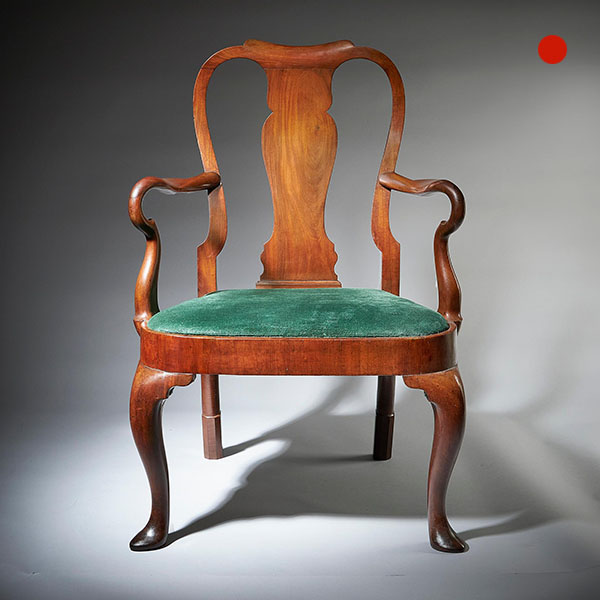
Rare 18th Century George II Mahogany Armchair with Carved Shepherds Crook Arms
Rare 18th Century George II Mahogany Armchair with Carved Shepherds Crook Arms Sold Follow UsRare 18th Century George II Mahogany Armchair with Carved Shepherds Crook Arms A fine example of a bold early George II mahogany dressing chair with...
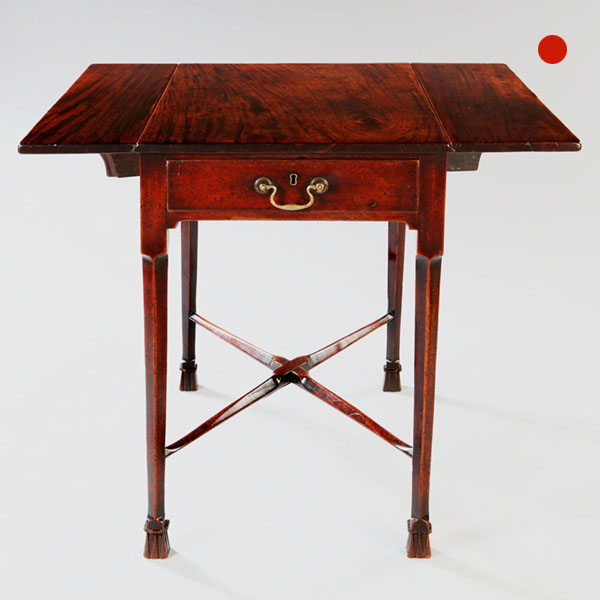
George III Mahogany Pembroke Table
Fabulous George III mahogany Pembroke table, retaining its original gilt swan-neck handle, skeleton escutcheon and rich wax patinated finish.
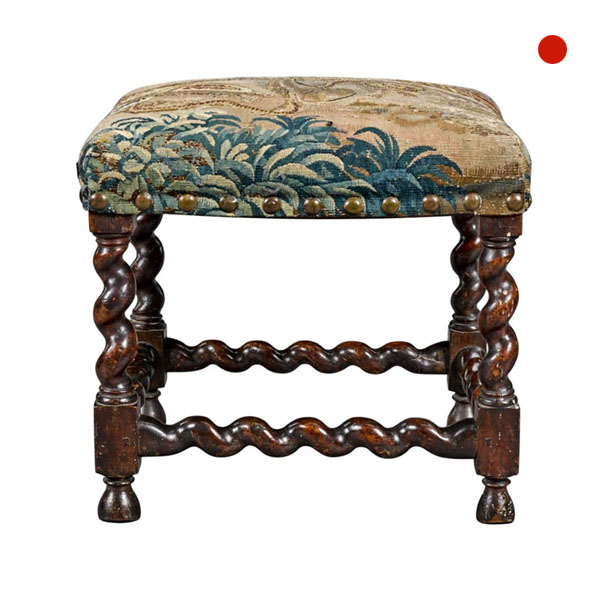
Fine 17th Century Barley or Solomonic Twist Baroque Walnut Stool with Tapestry
Fine 17th Century Barley or Solomonic Twist Baroque Walnut Stool with Tapestry SoldFollow UsFine 17th Century Barley or Solomonic Twist Baroque Walnut Stool with Tapestry Dating from the last quarter of the 17th century and with a period...

Large George III 18th Century Mahogany Wine Cooler Cellarette or Jardinière
Large George III 18th Century Mahogany Wine Cooler Cellarette or Jardinière SoldFollow UsLarge George III 18th Century Mahogany Wine Cooler Cellarette or Jardinière A fine and large mid-18th century George III oval mahogany cellarette or wine...

George III 18th Century Mahogany Armchair in the Manner of Thomas Chippendale
George III 18th Century Mahogany Armchair in the Manner of Thomas Chippendale Sold Follow UsGeorge III 18th Century Mahogany Armchair in the Manner of Thomas Chippendale This wonderful and original armchair from the mid-18th century...

Large 17th Century William and Mary Figured Walnut Cushion Mirror
Large 17th Century William and Mary Figured Walnut Cushion Mirror SOLDFollow UsLarge 17th Century William and Mary Figured Walnut Cushion Mirror The age patinated mercury mirror plate is bordered with a fine cross-grain ogee moulding....

Rare 18th Century George II Mahogany Armchair with Carved Shepherds Crook Arms
Rare 18th Century George II Mahogany Armchair with Carved Shepherds Crook Arms Sold Follow UsRare 18th Century George II Mahogany Armchair with Carved Shepherds Crook Arms A fine example of a bold early George II mahogany dressing chair with...

George III Mahogany Pembroke Table
Fabulous George III mahogany Pembroke table, retaining its original gilt swan-neck handle, skeleton escutcheon and rich wax patinated finish.

Fine 17th Century Barley or Solomonic Twist Baroque Walnut Stool with Tapestry
Fine 17th Century Barley or Solomonic Twist Baroque Walnut Stool with Tapestry SoldFollow UsFine 17th Century Barley or Solomonic Twist Baroque Walnut Stool with Tapestry Dating from the last quarter of the 17th century and with a period...

Large George III 18th Century Mahogany Wine Cooler Cellarette or Jardinière
Large George III 18th Century Mahogany Wine Cooler Cellarette or Jardinière SoldFollow UsLarge George III 18th Century Mahogany Wine Cooler Cellarette or Jardinière A fine and large mid-18th century George III oval mahogany cellarette or wine...
YOU MAY ALSO LIKE
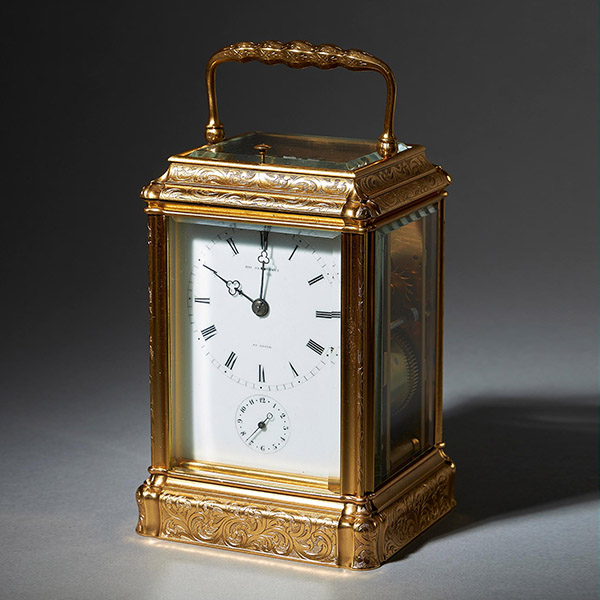
Engraved Eight-Day Striking and Repeating Carriage Clock by Perregaux Au Locle
Engraved Eight-Day Striking and Repeating Carriage Clock by Perregaux Au Locle Follow UsEngraved Eight-Day Striking and Repeating Carriage Clock by Perregaux Au Locle The superb engraved gilt gorge brass case has facetted glass panels to all...
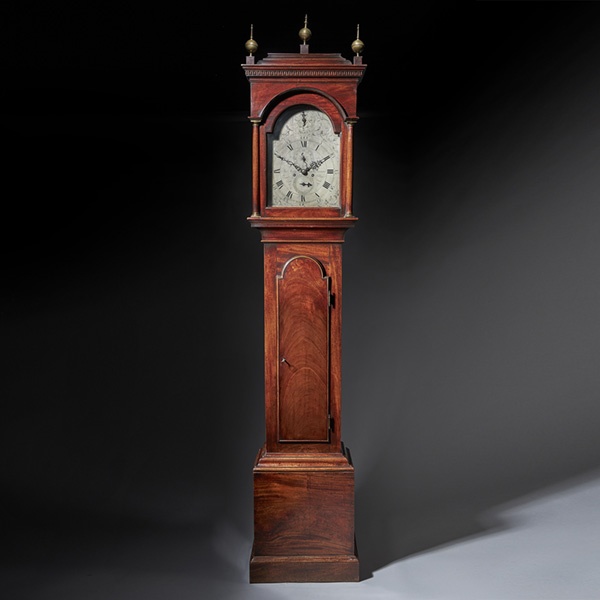
Fine George III 18th Century Period Mahogany Longcase Clock by Tomas Fowle
18th Century Period Mahogany Longcase Clock by Tomas Fowle £12,995 Follow Us18th Century Period Mahogany Longcase Clock by Tomas Fowle A fine George III period mahogany longcase clock of excellent colour, patination and proportions, circa...
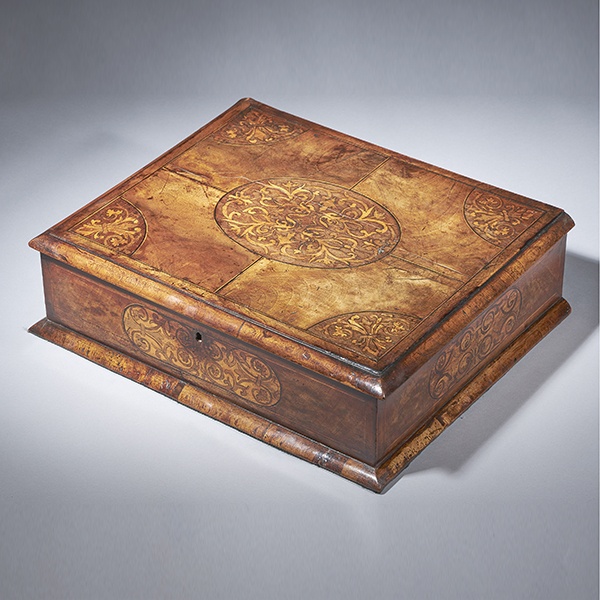
17th Century Figured Walnut and Seaweed Marquetry Lace Box
17th Century Figured Walnut and Seaweed Marquetry Lace Box £3,600 Follow Us17th Century Figured Walnut and Seaweed Marquetry Lace Box A fine and extremely rare figured walnut and seaweed marquetry 'lace box', circa.... let’s break it down -...
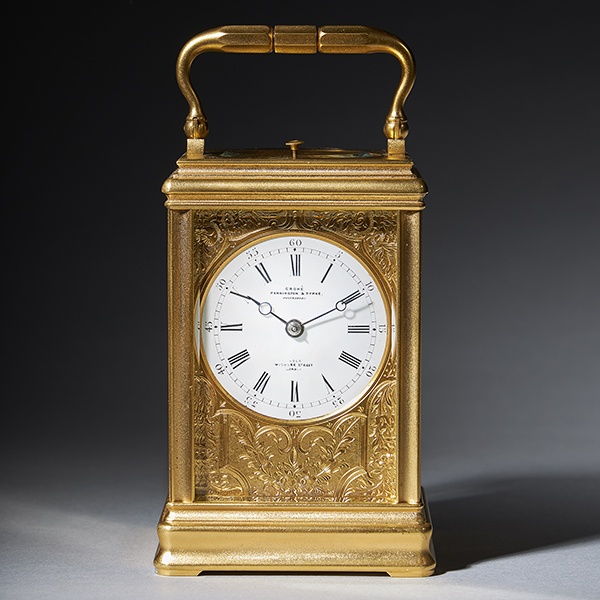
19th Century Repeating Gilt-Brass Carriage Clock by the Famous Drocourt
19th Century Repeating Gilt-Brass Carriage Clock by the Famous Drocourt £5,600 Follow Us19th Century Repeating Gilt-Brass Carriage Clock by the Famous Drocourt A superb repeating carriage clock with a gilt-brass gorge case by the famous maker...
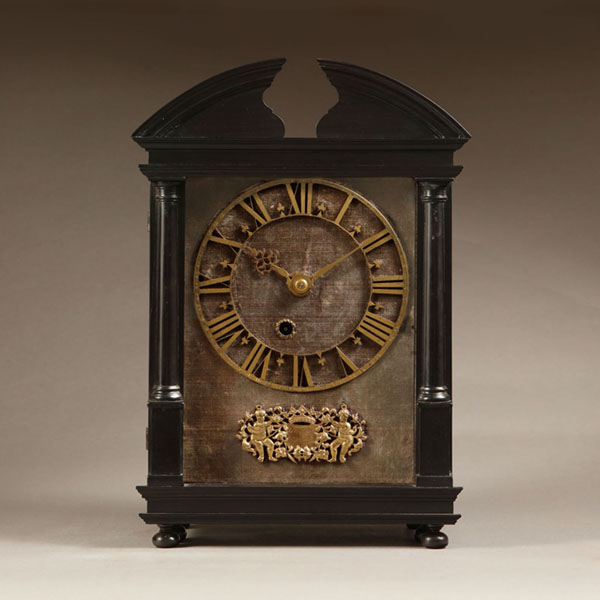
17th-Century Hague Clock Signed by Pieter Visbagh, circa 1675
Small 17th Century Hague clock made c. 1675 by Pieter Visbagh, who was apprenticed by Salomon Coster. The latter made the first pendulum clock according to the instructions of Christiaan Huygens, the internationally renowned scientist who developed the idea of applying a pendulum to a clock movement.
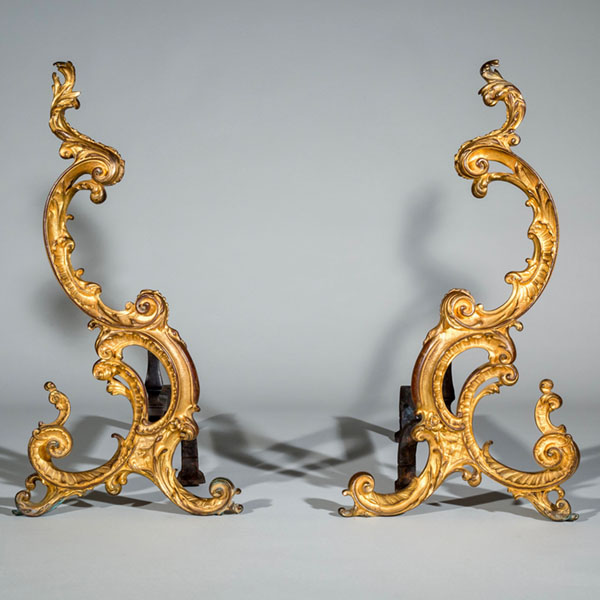
Pair of 18th-Century English Rococo Gilt Bronze Andirons or Firedogs
An exceptional pair of 18th century English Rococo gilt bronze andirons or fire dogs.
The bold shape of these andirons relate to designs of Thomas Johnson (1714–1778), one of London’s pioneers of the ‘Modern’ or French style, later known as Rococo.

Engraved Eight-Day Striking and Repeating Carriage Clock by Perregaux Au Locle
Engraved Eight-Day Striking and Repeating Carriage Clock by Perregaux Au Locle Follow UsEngraved Eight-Day Striking and Repeating Carriage Clock by Perregaux Au Locle The superb engraved gilt gorge brass case has facetted glass panels to all...

Fine George III 18th Century Period Mahogany Longcase Clock by Tomas Fowle
18th Century Period Mahogany Longcase Clock by Tomas Fowle £12,995 Follow Us18th Century Period Mahogany Longcase Clock by Tomas Fowle A fine George III period mahogany longcase clock of excellent colour, patination and proportions, circa...

17th Century Figured Walnut and Seaweed Marquetry Lace Box
17th Century Figured Walnut and Seaweed Marquetry Lace Box £3,600 Follow Us17th Century Figured Walnut and Seaweed Marquetry Lace Box A fine and extremely rare figured walnut and seaweed marquetry 'lace box', circa.... let’s break it down -...

19th Century Repeating Gilt-Brass Carriage Clock by the Famous Drocourt
19th Century Repeating Gilt-Brass Carriage Clock by the Famous Drocourt £5,600 Follow Us19th Century Repeating Gilt-Brass Carriage Clock by the Famous Drocourt A superb repeating carriage clock with a gilt-brass gorge case by the famous maker...

17th-Century Hague Clock Signed by Pieter Visbagh, circa 1675
Small 17th Century Hague clock made c. 1675 by Pieter Visbagh, who was apprenticed by Salomon Coster. The latter made the first pendulum clock according to the instructions of Christiaan Huygens, the internationally renowned scientist who developed the idea of applying a pendulum to a clock movement.

Pair of 18th-Century English Rococo Gilt Bronze Andirons or Firedogs
An exceptional pair of 18th century English Rococo gilt bronze andirons or fire dogs.
The bold shape of these andirons relate to designs of Thomas Johnson (1714–1778), one of London’s pioneers of the ‘Modern’ or French style, later known as Rococo.









